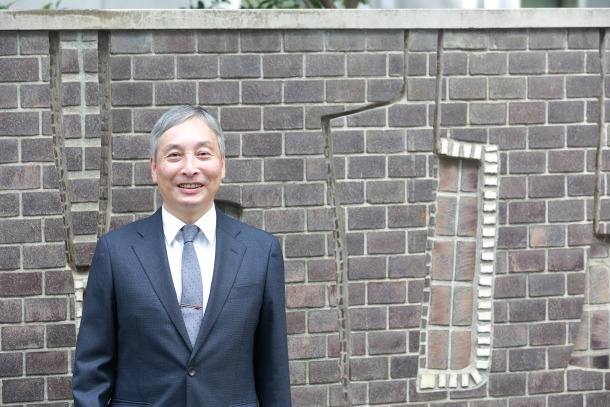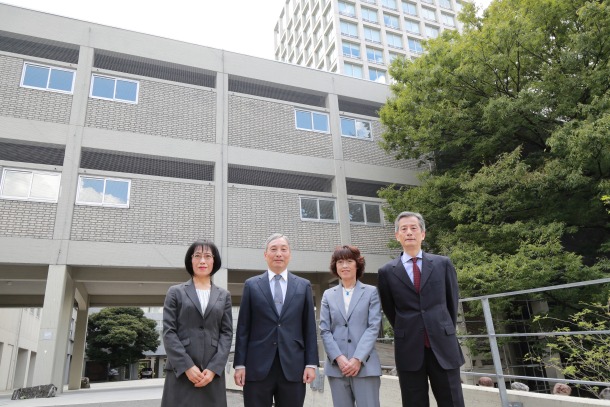 From you to Waseda, from Waseda to you
From you to Waseda, from Waseda to you
Waseda University has a 120-year-long tradition of research in the humanities rooted in research on Shakespeare by Dr. Tsubouchi Shoyo. This tradition has extended within the School of Humanities and Social Sciences which is deepening research in the human sciences and the School of Culture, Media and Society which is creating new fields and anticipating the future. The Graduate School, which furthers the special fields of both schools, provides full-scale specialty curriculum aimed at actively promoting the acquisition of the doctoral degree. As the Faculty of Letters, Arts and Sciences, in which the traditional and progressive spirit literally coexist, we provide a setting that brings new possibilities into being.
The Faculty of Letters, Arts and Sciences has produced an extraordinary variety of talented people. It has long adopted liberalism, non-affiliation, independence of scholarship, and a progressive spirit and respected a tradition of bringing together outstanding people from throughout Japan, allowing their individual characters to challenge one another as they apply themselves to study. As a result, a large number of highly talented people have launched into various fields of activity. In the open ethos of the Faculty of Letters, Arts and Sciences, we have stressed research on and respect of different cultures and the societies and traditions of heterogeneous peoples. Through personal interchange and efforts to promote mutual understanding with the countries of the West and Asia, we have established academic affiliations with overseas institutions. In the years to come, within the rapidly globalizing community, the young people who have studied enthusiastically at the Faculty of Letters, Arts and Sciences will undoubtedly play pivotal roles in the future of the world.

Faculty of Letters, Arts and Sciences
From the Senior Dean
YANAGISAWA Akira
On the Toyama Campus of Waseda University, education and research programs were offered for a long time at the School of Literature I (day school, changed its English name to School of Letters, Arts and Sciences I in 2002) and the School of Literature II (evening school, changed its English name to School of Letters, Arts and Sciences II in 2002) as well as the Graduate School of Letters, Arts and Sciences (GLAS). Following that, in 2004 these two schools and the graduate school were merged to form the Faculty of Letters, Arts and Sciences (FLAS). That was about 20 years ago. Subsequently in 2007, the Schools of Literature I and II were restructured to form two schools, which are now called the School of Culture, Media and Society (CMS) and the School of Humanities and Social Sciences (HSS). It seems to me, as a graduate of the School of Literature I, that it all happened only recently, but the School of Culture, Media and Society and the School of Humanities and Social Sciences have become familiar names, and very few people may still remember that the Schools of Literature I and II once existed.
One of the characteristics of the two schools is what is called the 1-3 system. Under this system, new students are not yet affiliated with a specific course, but rather pursue basic education that will form the foundation for future coursework for a year. They will then choose any of the six theoretical configurations offered by CMS or any of the 18 courses offered by HSS. Many of our new students may not have a clear idea of what they want to learn when they join the University after successfully passing its entrance examination, and this system is particularly suited to those students. Now that more than 10 years have passed since the two schools were established, we realize that the basic education courses offered in the first year may not always be well linked to the specific courses offered from the second year onwards, and we are in the process of assessing and discussing whether there is any room for improvement.
Another characteristic has to be the sheer size of the schools and the graduate school. The number of students at CMS, HSS, and GLAS totals some 7,000. CMS and HSS offer a uniform group of courses, known as “Bridge Courses,” that students from both schools can take, and there are as many as 1,100 Bridge Courses available.
Now, you may be wondering just what on earth do we learn and research in this huge institution consisting of these two schools and their graduate school. It is not actually easy to answer this question. Put it simply, the answer would be “humanities,” but the academic disciplines offered by FLAS encompass wide fields, and some of them require techniques that are used almost exclusively in the study of science. Once you enter any of the fields, you will soon find that there is a vast knowledge system spreading endlessly like an ocean. If I were to describe the characteristics and appeals of each and every academic discipline, I would inevitably run out of space.
Although we offer a wide range of courses across many disciplines, the key aspects of what we want all our students to learn at this University all have shared principles. One of them is to “support your argument with evidence.” Today, the Internet and social media are overwhelming, and we are bombarded with various comments and arguments from all sides. Some of them, which offer sharp insights into global or social issues, can be quite interesting. However, it should be noted that many of them are quite different, in terms of quality, from the academic works produced and disseminated by universities.
When you claim or argue something academic, you should always support your claim or argument with evidence. Simply citing references in a casual manner is not sufficient. Now, let us pretend that you are going to present your interpretation of an event that took place during the warring states period in Japan for your seminar paper. “First, let me ask you this question. What is the evidence for your interpretation?” “A book called ABC by Professor X.” “OK, but you are just repeating what Professor X said in the book. You need to think about this. Did Professor X actually witness the event? I pretty much doubt it. I’m sure he must have relied on some other reference materials.” If you trace back Professor X’s research, you will probably come across a document written by a feudal lord in the warring states period. Well, you are nearly there. Now then, did Professor X correctly interpret the document? Are there any other reference materials that could be used to explore alternative interpretations? You will come across multiple new discoveries in this manner if you critically read existing research materials in order to thoroughly make questions and judgments regarding the reliability of the evidence on which your research materials are based.
Reference materials that can serve as evidence vary. If you research a work of literature or art, you can use that work of literature or art itself as powerful evidence to support your research. If you research the workings of the human mind or a current social issue, you can “create” reference materials by conducting experiments, interviews, or questionnaire surveys. Whatever types of materials you use, it is important to carefully determine whether you have chosen your evidence in an appropriate manner and whether your evidence is logically linked to your conclusion. Only then can you elevate your narrative from a simple “opinion” to a well-founded claim or argument suitable for the university environment in which such claims can be made into the subject of academic discussion and scrutiny. I hope that those of you who go on to study at the Toyama Campus will master this knowledge methodology before you complete your studies and graduate.
Nevertheless, it is not always possible to arrive at the “right answer,” no matter how much effort you put into the search for evidence. Questions in university entrance examinations are designed to have only correct answers. However, many questions relating to historical events or modern societal issues do not often have definite or straightforward answers. Despite this reality, academic studies come down to a relentless quest for evidence so as to be as close to the “right answer” as possible.

*From left side
TANIGUCHI Shinko :Dean of School of Humanities and Social Sciences
YANAGISAWA Akira :Senior Dean of Faculty of Letters, Arts and Sciences & Dean of School of Culture, Media and Society
KAKIUCHI Keiko :Dean of Graduate School of Letters, Arts and Sciences
OHTOSHI Tetsuya :Director of Research Institute for Letters, Arts and Sciences